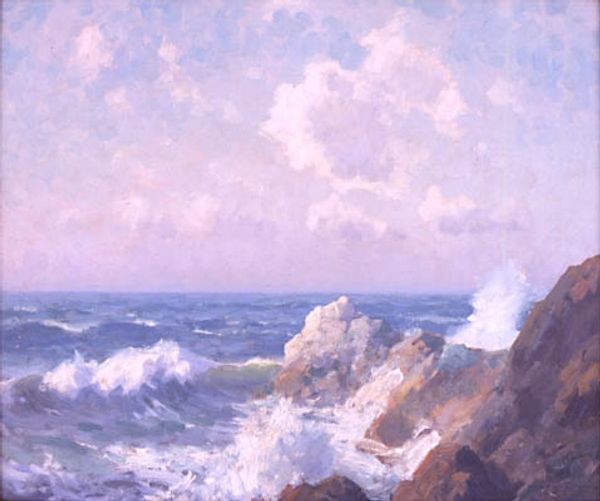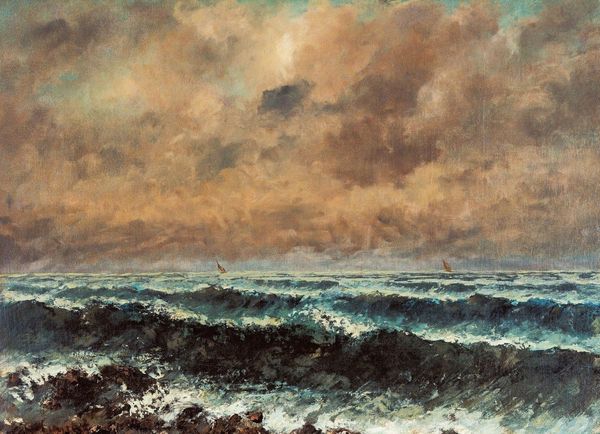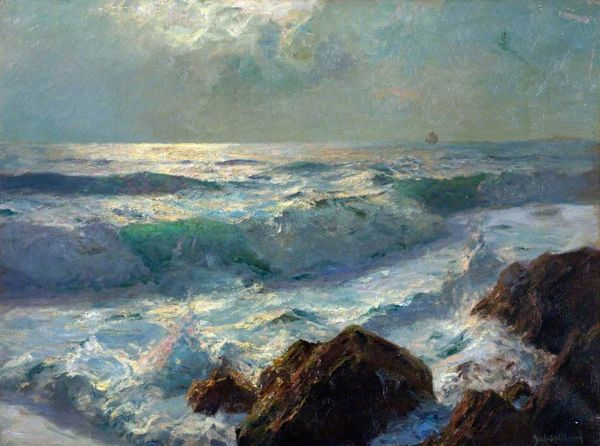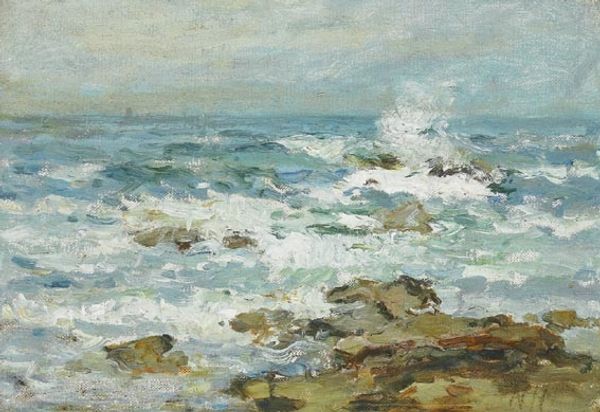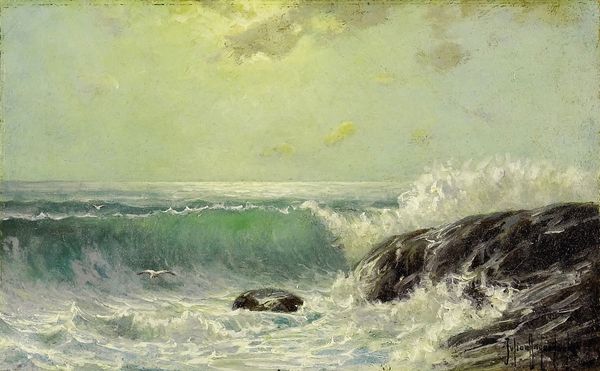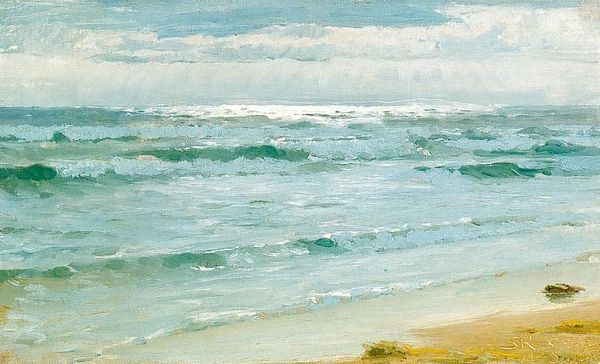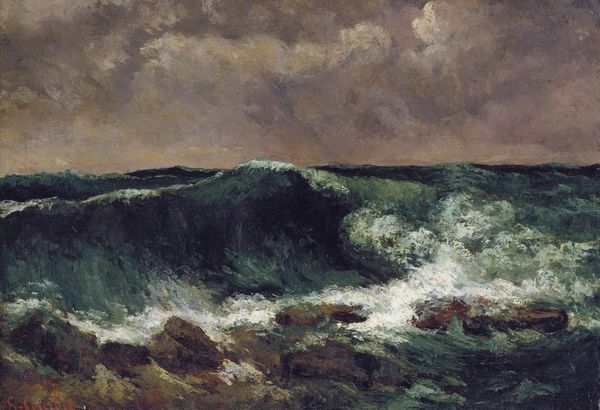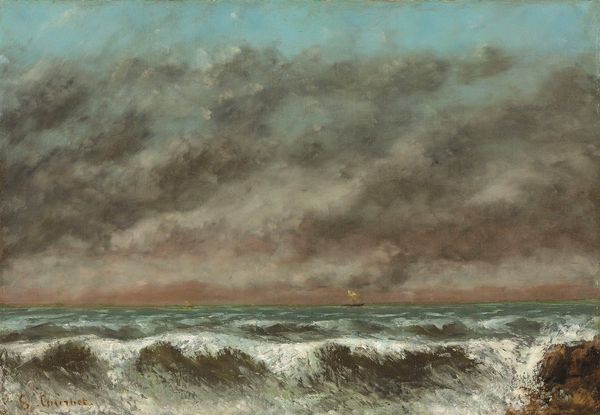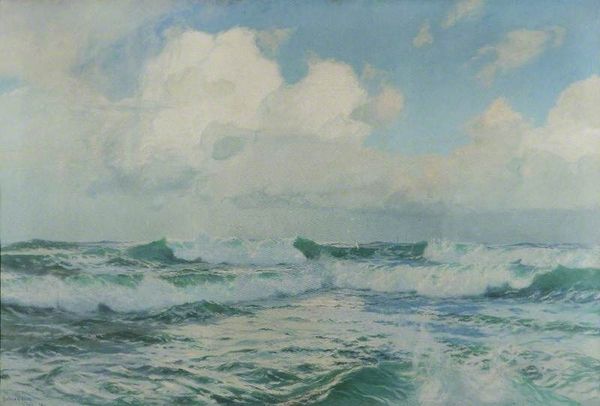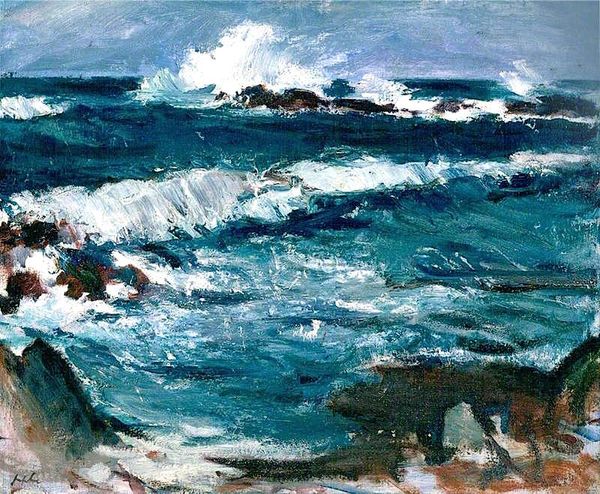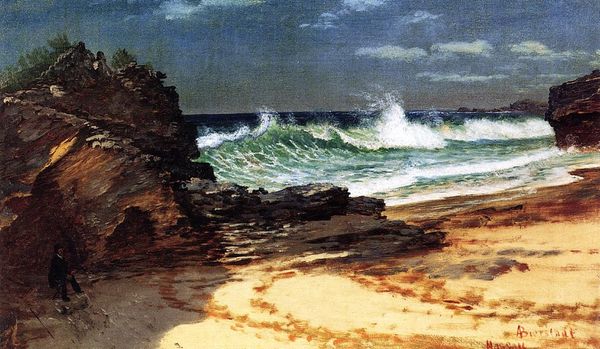
Copyright: Public domain
Curator: Gustave Courbet's "The Wave," painted in 1871, captures a moment of raw, untamed nature. It’s currently held in a private collection. Editor: The mood is instantly dramatic, almost menacing. The sky presses down, and the waves seem ready to crash right out of the canvas. There's a compelling tension between the vastness of the scene and its rather limited palette. Curator: Courbet's process here is fascinating. He often used a palette knife to apply the oil paint, creating thick impasto textures, especially in the waves. It mirrors the physical labor, almost like he's wrestling the ocean onto the canvas. Considering the political turmoil in France at the time, with the Franco-Prussian War and the Paris Commune, one can interpret this seascape as reflecting social unrest, the instability of the nation. Editor: Yes, the surface itself communicates that unrest. The density of the paint contributes a sculptural quality and intensifies the visual experience. But on the topic of pure visual sensation, the horizontal structure, where the composition’s upper and lower sections vie for dominance, offers a great look at color temperature shifts—it goes from the cool blues and whites above to the warmer browns of the sand below. Curator: Precisely! The materiality tells a story of both artistic technique and societal pressures. Think about the availability and cost of pigments at that time; the choice of a limited palette itself could reflect material constraints impacting artistic production. Courbet was very conscious about depicting the real world as he saw it. His focus wasn’t necessarily about capturing beauty. Editor: While Courbet aimed to depict realism, I still detect elements of romanticism in the painting’s subject. The scale is formidable. I appreciate the balance, too—how the dark rocks anchor the scene. And I find the sky particularly effective with its muted purples adding even more expressive impact to the overall composition. Curator: "The Wave," like much of Courbet's work, challenges academic traditions by depicting everyday life. Here he captures the elemental power of the ocean—without idealization or sentimentality, but by embracing material reality. Editor: Indeed, and it's that very material reality—the paint itself and the artistic choices embedded in it—that renders "The Wave" not just a representation, but a palpable experience of nature’s power.
Comments
No comments
Be the first to comment and join the conversation on the ultimate creative platform.
